HOLOCAUST
Thematic Philatelic
Presentation
Remembrance
ILLUSTRATED KZ MAIL PART 1
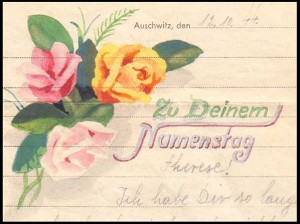
Sooner or later, most collectors of German concentration camp mail will run across prisoner mail objects that have been adorned with illustrations. These illustrations tend to fall into certain categories, with holiday-related drawings or paintings being the most prevalent. Their exact origin is still something of a mystery. The simplest explanation, that a prisoner wished to communicate something more than words can convey to family and friends, is certainly true up to a point. However, in the twisted world of the concentration camps few things were truly simple. In general, prisoner mail rules forbade the inclusion of illustrations or photographs in both outgoing and incoming mail. Prisoners could face suspension of mail privileges, or even severe beatings, for running afoul of these regulations. Thus, when such illustrations are found it usually indicates that a prisoner either had special privileges within the camp, or decided to take a considerable risk with the censor.
ILLUSTRATED KZ MAIL PART 2
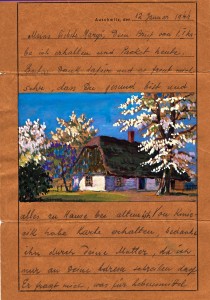
There were numerous artists incarcerated at Auschwitz, and through various means many of them were allowed to pursue their art. The most easily understood arrangement involved painting or decorating at the command of the SS, usually for the camp art museum. 5killed prisoners such as these were usually held in higher regard by the SS, at least temporarily. As a result they were sometimes allowed to paint or draw on their own, provided the subject matter did not violate regulations.
Other artistic prisoners drew in secret, showing their work to no one out of fear of almost certain retribution. Penalties included beatings and the suspension of mail privileges for months at a time. For many the motivation was simply to forget their surroundings and for the moment lose themselves in painting.
FOXBOROUGH REGIONAL CHARTER SCHOOL (FRCS) IN MASSACHUSETTS
Millions of Stamps Teaching “Countless Lessons in Tolerance”
Charlotte Sheer, Founder, Holocaust Stamps Project, Retired educator Foxborough Regional Charter School, Foxboro, MA
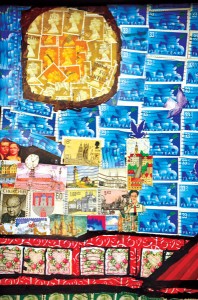
Sun Shine
In 2009, fifth grade students at Foxborough Regional Charter School (FRCS) began collecting cancelled postage stamps. But these young people were not aspiring to become junior philatelists. They were the first participants in a hands-on exercise designed to visually represent the enormity of 11 million lives senselessly and tragically wiped out by the Nazis during World War II.
Today, the Holocaust Stamps is a Community Service Learning component at FRCS. It serves as an educational springboard for history-based lessons about the dangers of prejudice and discrimination as well as the importance of practicing tolerance and developing respect for differences.
In August, 2013 the SIP journal article “Collecting Millions of Stamps” (p. 140) detailed the origin and evolving goals of the ongoing Project at this kindergarten to grade 12 public school in Foxboro, Massachusetts. The student population represents a demographically and culturally diverse cross section from more than 20 area communities, making FRCS an especially appropriate venue for such an ambitious anti-bullying initiative.
Millions of Postage Stamps
Delivering More than Just Mail
6,834,594 Stamps Collected
60% of Goal of 11,000,000
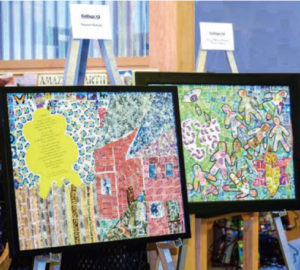
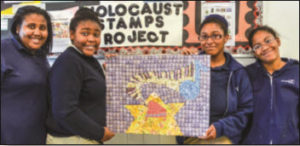
Since 2009, students at Foxborough Regional Charter School (FRCS) in Massachusetts have been collecting, trimming, counting, and sorting postage stamps donated to the Holocaust Stamps Project. What began as a history-related enrichment activity in a fifth grade classroom has become a component of the Community Service Learning program at this kindergarten to grade 12 public school-of-choice. The Project serves as a springboard to countless lessons not only about history, but also about tolerance, the importance of accepting others and having respect for differences among individuals and groups.
































